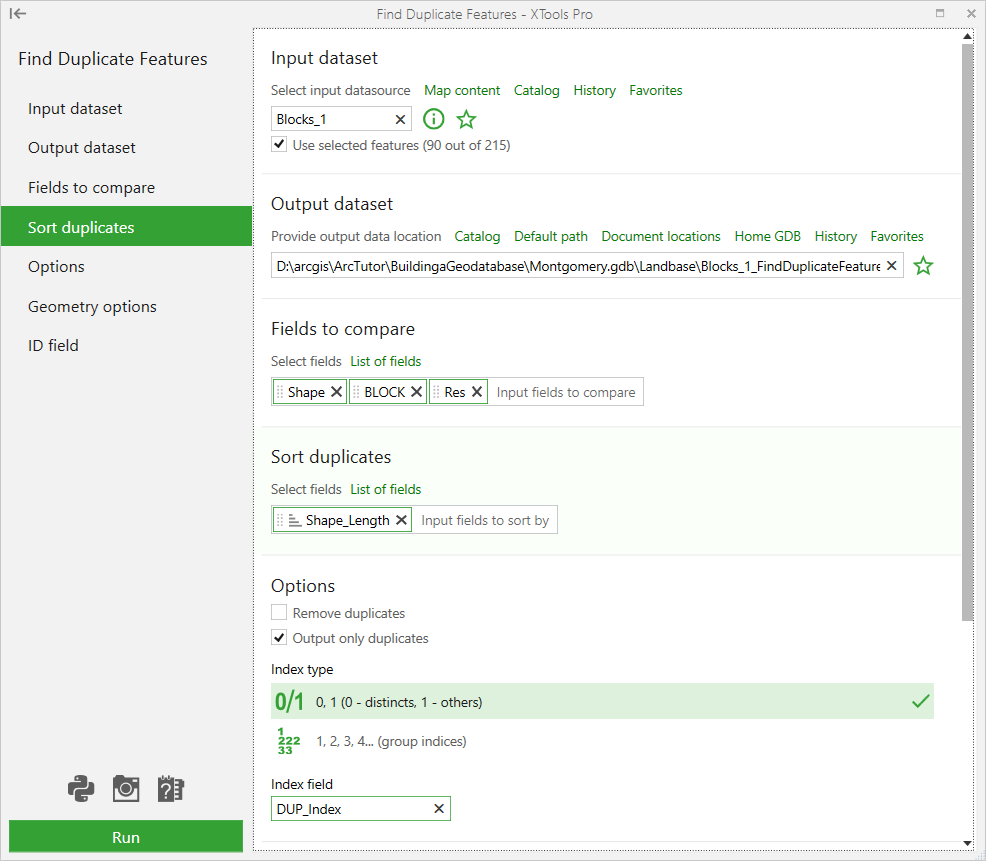Find Duplicate Features
Purpose
The tool is aimed to finding and, optionally, removing duplicated features/records in the specified feature class/table.
Description
Using the Find Duplicate Features tool you can easily find duplicated features and records in your data. Found duplicates can be sorted and are indexed in a new attribute field of an output feature class/table. Using this index field you can always select duplicated entries and/or remove them if required.
Duplicated features can be searched by the Shape field. Features and records are considered as duplicates by comparing the selected attribute fields and/or Shape field. Therefore, you can find features duplicated by both geometry and attributes.
Finding Duplicates
-
Select the "Find Duplicate Features" tool from the XTools Pro Feature Tools.
-
Select the input feature layer or table in which you wish to find duplicated features/records.
-
Specify the name and location of the output table or feature class.
-
Select fields to compare.
-
Select fields to sort duplicate features.
-
Specify duplicates processing options:
- Select to either remove duplicates or output
only duplicates
- Select index type for duplicates
- Specify index field name
-
Specify geometry options (if Shape field is selected):
- Select to compare features by Z and M values
- Specify XY and Z tolerance
-
Specify ID field to store input features IDs.
-
Press Run to find duplicated features or records.

The Remove duplicates option
allows removing all found duplicates but the first ones, i.e. only the
first duplicated records will remain in the output dataset. You can use
Sort duplicates option to manage
what duplicate will be the first. Several fields may be selected to sort
duplicate features or records, the sort direction may also be specified
(ascending or descending) clicking on  button. At that, if you select to remove duplicates all other options
become unavailable.
button. At that, if you select to remove duplicates all other options
become unavailable.
Note:
Duplicates will be sorted by the input fields in order they've been selected.
For indexing duplicates there are two index types provided:
-
Indexes "0" or "1", where all distinct values indexed with 0, and all others indexed with 1.
-
Group Indexes 1, 2, 3, 4, ..., where each group of duplicated values indexed with a unique index.









